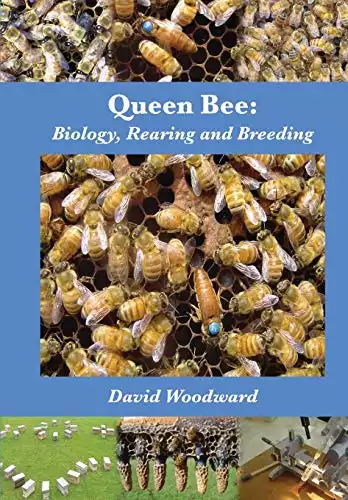The mysterious matriarch of the honey bee colony, the queen bee, is both fascinating and elusive. Elusive to the untrained eye, at least.
The queen bees are vital to the health and strength of any colony. They are not dictators, despite their names. But, their presence and ability to reproduce do dictate the bees’ future in every nest or hive.
Surprisingly, it is the worker bees that decide the fate of the queen and not vice versa. The queen’s life and reign are at their mercy.
Should the queen bees not reproduce at the required rate, the workers will arrange a replacement queen. When queens are ready to mate, it is the worker bees that prepare them.
Here are some facts about the queen bee and her role in the colony!
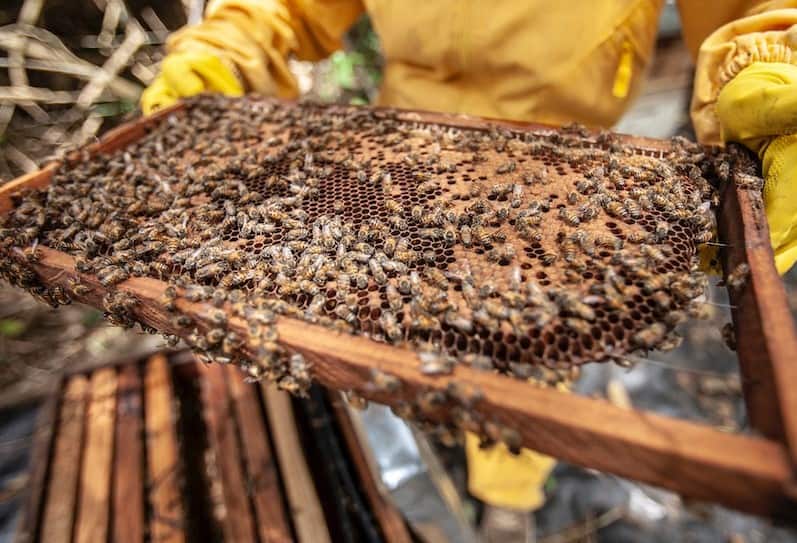
How Queen Bees Are Born
When it’s the right time for swarming, the old queen honey bee starts to lay eggs into queen cups.
A new queen can be produced from any fertilized egg laid by the preceding queen. What determines the fate of these potentially royal eggs’ is the diet served to them by the workers.
You might be familiar with the term royal jelly but unsure of what it is.
Royal jelly is secreted from the heads of junior worker bees. It is a white, gelatinous substance that is high in protein.
Nurse bees feed royal jelly exclusively to the queen larvae that have been selected as potential honey bee queens. All other eggs are given food composed of a mixture of nectar and pollen, charmingly known as bee bread.
This exclusive diet develops the potential honey bee queen into a sexually mature bee.
It is worth noting here that egg-laying is the job of queen honey bees. Unlike worker’s eggs, which are raised in regular brood comb, queen eggs are raised in specially built queen cups that are larger.
When she is ready to emerge, the new virgin queen will gnaw her way out of the queen cell. When the honey bee queens-to-be find it hard to get out of queen cells, workers are always ready to assist in breaking her out. They help gnaw the queen cells for the queens to get free.
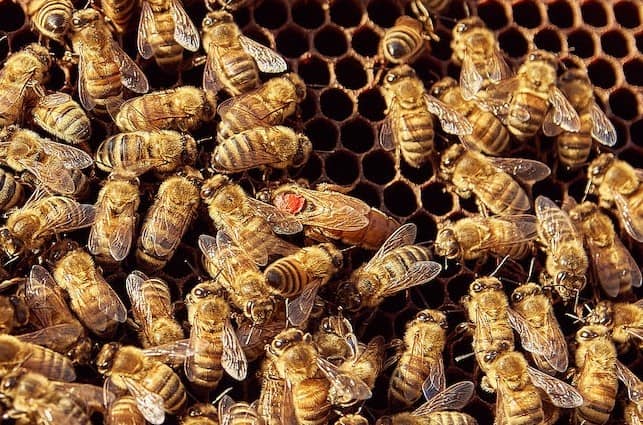
How Queen Bees are Selected
How does a bee become a queen?
In nearly all cases, there is only one queen per colony. No matter the colony size. That queen is the center of the universe for the worker bees. That is, until she becomes less useful.
Be it through age or illness, at some stage, queen bees will begin producing fewer eggs. When the worker bees sense the weakening of their queens, they start raising new queens to replace the old ones.
Which of the new queens is selected as the new reigning monarch is solely on a first-come, first-serve basis. The first to chew her way out of her papery cell will immediately find herself faced with a conundrum and become the new queen.
If it so happens that two queens emerge at the same time, they will fight to keep the throne until one of them dies. The one that survives is the new queen.
The survivor, if she decides to stay, must do away with the yet-to-be-hatched queens. As the only bee with a reusable stinger, the virgin queen will, in fact, sting the unborn virgin queens through the queen cell to kill them.
Alternatively, a virgin queen who is at risk of imminent death due to competing virgin queens may also choose to leave the nest.
She, the virgin queen honey bee, can choose to leave the colony with some loyal workers and drone bees and create her own. By doing so, she helps propagate the species by swarming.
In this scenario, the virgin queen will either take half of the workers to create her own honey bee colony, as mentioned above.
Or, she may also choose to go alone. When a virgin queen leaves alone, she must find a queenless colony to join. In most cases, the virgin queen is always welcomed at other queenless honey bee hives and becomes the new queen.
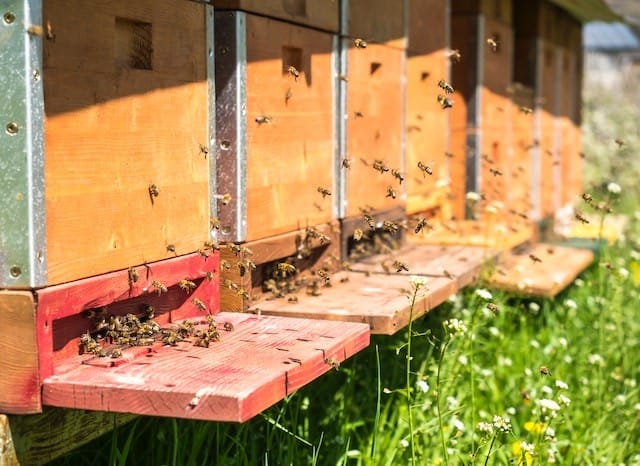
Why is the Queen Bee so Important?
With the organized caste system, the queen’s role in a honey bee colony is vital for everyone. Being the only female bee with developed ovaries, the queen is tasked to lay eggs. Laying eggs is necessary to populate and develop the colony with workers.
Beekeepers collect a lot of honey when there are lots of working members in a hive. All thanks to these workers, honey production is to the max! They are the ones gathering the nectars and pollen to produce honey.
As we all know by now, worker honey bees are vital for beekeepers and in the beekeeping industry. As the queens are the only ones laying eggs, every hive cannot do without one.
Egg-laying and producing more honey bees are essential in beekeeping. The fertilized eggs become workers, and the unfertilized eggs become the drones. Hence, it keeps the cycle of these species and keeps the beekeeping industry going.
Queens also have a vital role in producing chemical scents in the hive that are believed to unite the members of the colony. Queens and workers cannot survive without each other for so long. They are one family in a home.
How and When a Queen Bee Reproduces
Reproduction is the only real function of queen bees in a colony. She does not influence how things are run in the hive and exists only to create future bees.
Just days after her birth, the queen takes a “mating flight,” where drones meet her halfway to mate. The drones, or the males of the colonies, with whom the queen mates meet a tragic end and will die immediately afterward, having served their only purpose.
The mating ceremony takes place once in a queen bee’s life, albeit with the possibility of mating occurring over several days (weather conditions permitting). During this period, the queen will mate with up to 15 drones and store millions of sperm in a unique organ called the spermatheca.
Once mating is complete, the queen will return to her home colony and begin producing thousands of eggs a day inside the hive. A job she will continue for the rest of her life.

Honey Bee Queen Rearing
Beekeepers raise a honey bee queen from fertilized worker bee larvae through a process they call queen rearing.
In some instances, beekeepers graft a very young larva, not more than a day of age, into a queen cup. Beekeepers then place the queen cup in a cell-building colony. This colony is strong but queenless. They feed the larva royal jellies for it to develop into a queen.
A beekeeper resorts to this method of producing a queen when he has a queenless beehive.
Other beekeeping hobbyists also rear queen bees for profit.
To know more about rearing and breeding queens in your bee hive, some research would be helpful in finding good references for everything you want to know. Or you may want to check out some informational products like this book
How to Recognize a Queen Bee
Beekeepers like to keep an eye on the queen bee to determine the health of their colony. However, spotting a queen in the hive comes with practice, as her similarity to the workers largely camouflages her.
The difference to look out for is that queen bees are larger than workers or drones. Her abdomen is more extended. In total, the queen can grow up to 20mm in length.
A queen bee’s wings tend to be shorter than those of a worker. The latter grow to the length and size of their body, whereas the queen’s wings will reach only halfway.
To make a queen easier to identify, it is common practice for beekeepers in the United States to mark her with either a special paint or a stick-on marker.
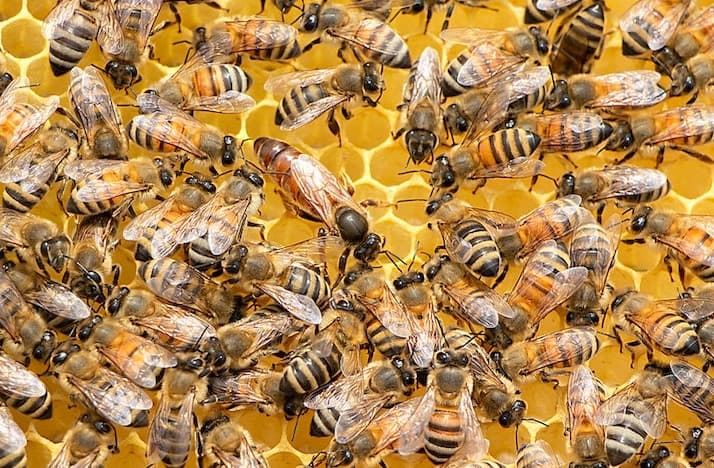
Does the Queen Bee Leave the Bee Hive?
Aside from the mating period early in her life, queens are unlikely to leave their hives or nests again.
On the occasion that the colony becomes too large, worker bees will decide that it is time to swarm with the queen bee and create a new colony.
Not used to flying, the queen must be prepared for swarming by the worker bees. This entails slimming her down so that she can fly. Once the new swarm establishes itself elsewhere, the queen will not leave the hive again.
Final Words
A colony without a queen is a colony in jeopardy. Without a matriarch to produce new bees and grow the colonies, the existing bees may perish.
It is normal for worker honey bees to attempt to raise emergency queen bees when the one they have is killed or dies unexpectedly. This they do by choosing brood cells where a larva is emerging. The emergency queens are often not as strong as regular queens.
As regular honey bees have a much shorter life expectancy than a queen, the race to replace her is life or death.

